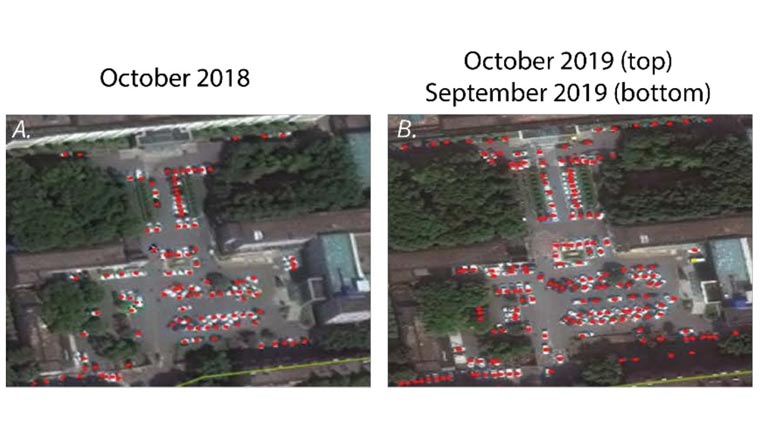A preprint Harvard Medical School study has used satellite imagery to identify a surge in traffic around Wuhan’s hospitals in August 2019. This data, alongside a surge in searches on social media for terms relating to flu and COVID-19 symptoms, suggests that the virus could have been spreading in Wuhan as early as August—though China had claimed the first confirmed case to have taken place in November that year.
The study, which was first reported by ABC News, uses “satellite imagery of hospital parking lots and Baidu search queries of disease-related terms” to investigate this possibility of an earlier beginning to the outbreak. “We observe an upward trend in hospital traffic and search volume beginning in late Summer and early Fall 2019,” the study says in its abstract.
The study utilised high-resolution satellite imagery from RS Metrics to count the number of cars in hospital parking lots in Wuhan—a technique earlier used in a 2015 study testing the technique as a proxy indicator on hospitals in Mexico, Argentina and Chile.
“While we cannot confirm if the increased volume was directly related to the new virus, our evidence supports other recent work showing that emergence happened before identification at the Huanan Seafood market,” the study says.
“These findings also corroborate the hypothesis that the virus emerged naturally in southern China and was potentially already circulating at the time of the Wuhan cluster. In August, we identify a unique increase in searches for diarrhea which was neither seen in previous flu seasons or mirrored in the cough search data. While surprising, this finding lines up with the recent recognition that gastrointestinal (GI) symptoms are a unique feature of COVID19 disease and may be the chief complaint of a significant proportion of presenting patients.”
The study was conducted by the Department of Global Health, Boston University School of Public Health, Boston, USA; the Computational Epidemiology Lab, Boston Children’s Hospital; the Department of Epidemiology, Boston University School of Public Health and the Departments of Pediatrics and Biomedical Informatics, Harvard Medical School.
China has since dismissed the study as “ridiculous”, with Reuters reporting Foreign Ministry spokeswoman Hua Chunying as saying at a press briefing on Tuesday, “I think it is ridiculous, incredibly ridiculous, to come up with this conclusion based on superficial observations such as traffic volume.”
Since the first cluster was identified at the Hunan Seafoods wet market in December 2019, the novel coronavirus has spread across the world, infecting over 7.1 million and leading to over 400,000 deaths.


